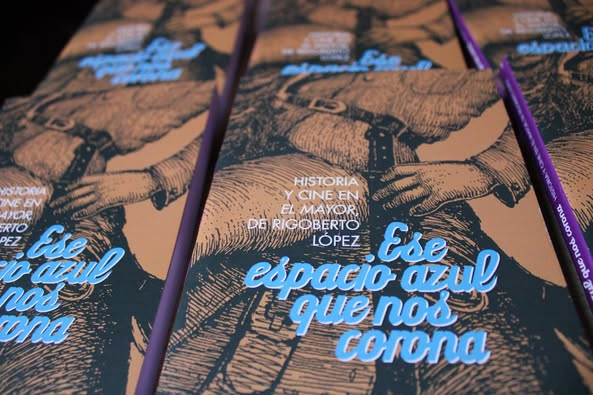
Camagüey, May 22nd. - In the Casa Natal de Ignacio Agramonte Museum (Birthplace of Ignacio Agramonte), where the story began, Camagüey lived another act of consecration. It wasn't a battle or a wedding. It was the presentation of a book: That blue space that crowns us. History and cinema in El Mayor, by Rigoberto López, published by Ediciones ICAIC in 2024 and presented for the first time, just on the most symbolic site possible.
There was emotion, evocation and gratitude at that meeting of the 29th National Workshop on Cinematographic Criticism, when the director of the publishing house, Mercy Ruiz, recalled how "Rigo ended up literally dedicating the last hours of her life to the film." The final edition was made at home, in an intimate, almost epic atmosphere. I wanted to the end being next to your movie. He did something heroic, he said. And like everything heroic in Cuba, it wasn't pain-free.

The story of El Mayor is not limited to the 19th century. From its gestation on paper to its premiere, the work itself has been marked by epic and tragedy. The filming was announced in January 2018 after 14 years of persistence. In January 2019, its director, Rigoberto López, died without seeing his most beloved work complete. And in March 2020, when it would finally premiere, the pandemic forced silence.

But Camagüey, a city faithful to his illustrious dead and his adopted children, gave El Mayor his soul back when he was able to share the film for the first time, in December 2020. It was in El Circuito, current Cine Encanto, that the voice of Agramonte echoed in the mouth of Daniel Romero, and where the face of Amalia Simoni, incarnated by Claudia Tomás, breathed again among the walls of history.
There, in tears, was Marilyn Sampera, Rigoberto's widow. And she felt present in the vibrating of the words Elda Cento, historian and advisor of the film, also died before the premiere. As did Santiago Llapur, Rolando Rodriguez, the technical team, and the actors, who confessed not to having seen even the first cut of the film in their director's life. In fact, not even the lovers.
Because in El Mayor a love was born too. And not just one: Claudia and Daniel, protagonists of the film, fell in love during the shooting and married as in a poetic script. on August 1, 2019, in Quinta Simoni itself where they had been Amalia and Ignacio. A habanero and a pine forest that made Camagey his destiny.

Mercy Ruiz, director of Ediciones ICAIC with researcher María Antonia Borroto, author included in the book, and Armando Pérez Padrón, host of the National Workshop on Cinematographic Criticism.
The book now presented is testimony, homage and analysis. He involved bringing together 13 prestigious authors in Cuban historiography, and combining articles, essays, documents and reconstructions. There are loving texts such as José Martí's semblance on Céspedes and Agramonte, visual studies such as that of Luis Fidel Acosta Machado on Cuban historical cinema, and an intimate reading of the epistolary relationship between Agramonte and Amalia, which María Antonia Borroto wrote in Elda's place, as a relief of the soul.
Closes with the Apostilles on El Mayor of the Camagüey researcher Luciano Castillo, who rebuilds from the first claqueta hit at Quinta Simoni, on February 20, 2018. Another return to the place where mounts, wooden spoons, stools and machete covers were also made to achieve the rigor that Rigoberto demanded.

What this book has done, as the film did before, is touch the nerve of identity. There is no way to tell this story without talking about sacrifice, love and memory. Because El Mayor is not just a film. Not even this book, just a book. They are part of the same search: to honor those who, alive or dead, made history an act of faith.
And Camagüey, who also lost Rigo and Elda, knew how to say present. In the house where Ignacio Agramonte was born, that blue space that crowned us reopened. Not to end the story, but to keep telling it. (Yanetsy León González/Adelante Digital) (Photos: Centro del Libro y Archivo Adelante Digital)